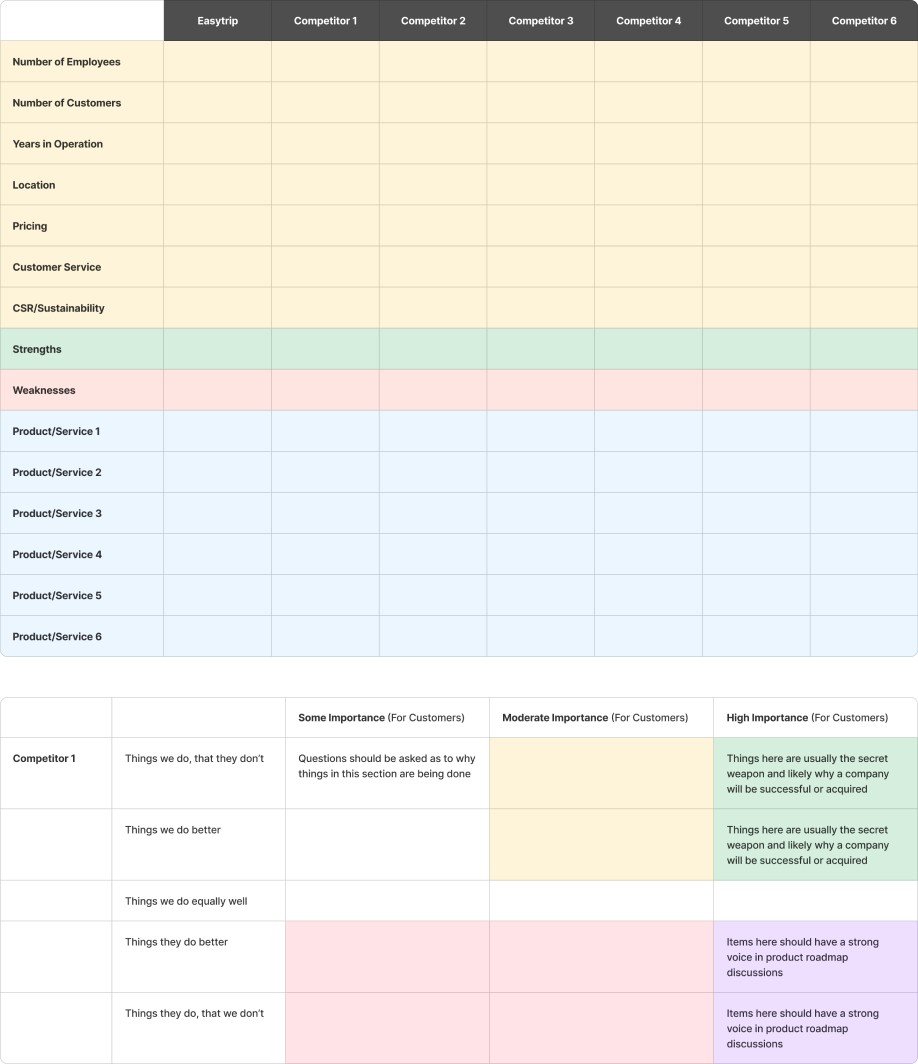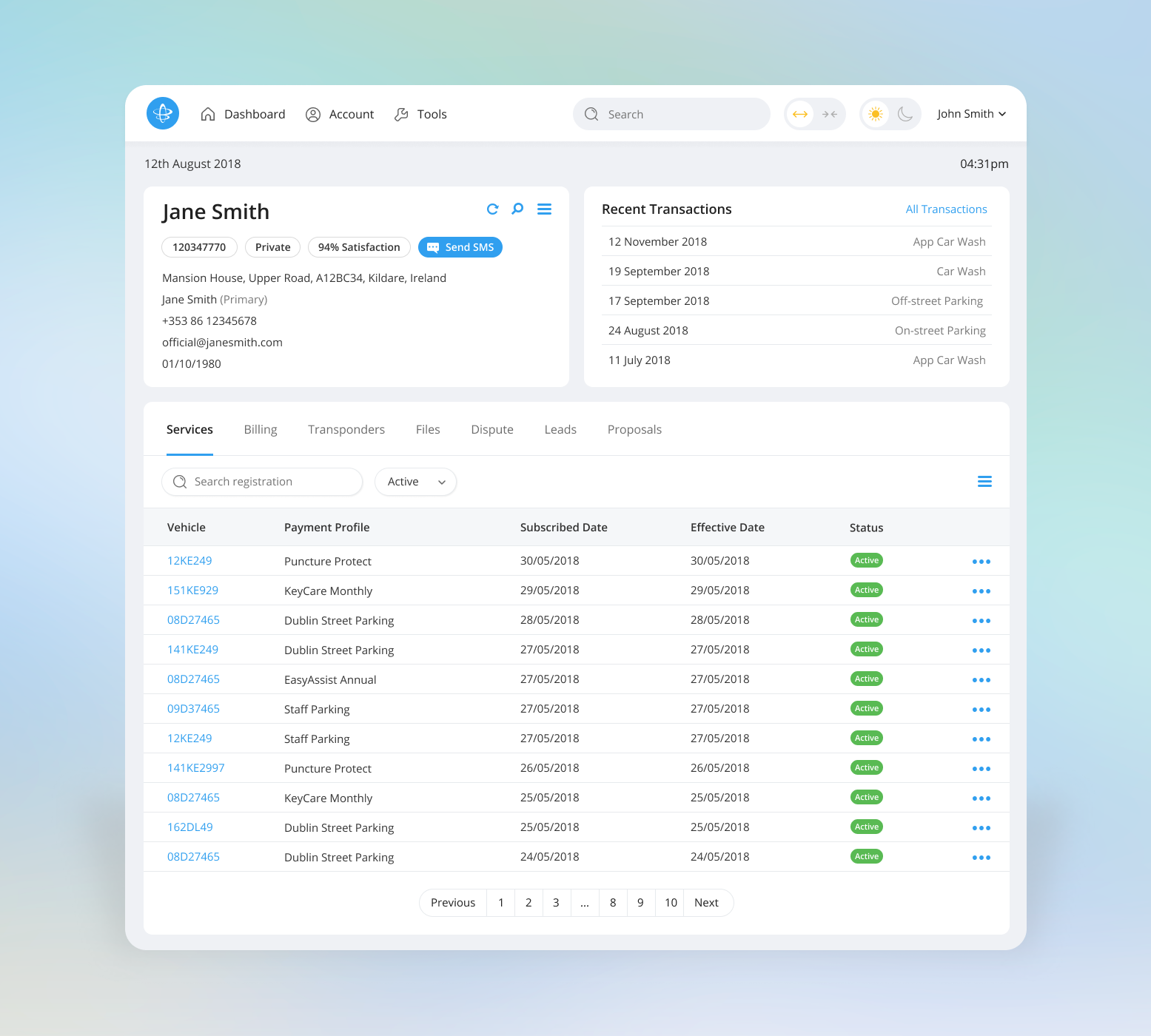
Easytrip, a prominent player in the Irish transportation industry, was established with the primary goal of simplifying travel for the Irish motoring community. It is a collaborative effort between Egis Projects and Electro Automation, capitalising on their extensive expertise spanning more than 15 years in electronic toll collection, car parking solutions, and access systems. In 2005, Easytrip became the first independent provider of electronic tolling services in Ireland. This commitment to innovation continued in 2008 when Easytrip acquired Eazy Pass from National Toll Roads. Subsequently, in 2009, the services were seamlessly rebranded as "Easytrip," consolidating their presence and making travel more convenient for all.
I was engaged to assist Easytrip with several challenges and opportunities.
Easytrip was determined to adopt a consistent design language, streamline customer service, launch a strong mobile presence and enhance their overall operational efficiency. Recognising the crucial role of design in achieving these goals, we embarked on formulating a comprehensive design strategy.
The need for a holistic design strategy became evident. Aiming to align design efforts with broader business objectives, we adopted an approach that regarded the entire Easytrip ecosystem and its products as a whole. The ultimate aim was to craft a seamless, interconnected experience by understanding how each part contributed to the overall business.
Numerous workshops involving C-level executives and key stakeholders not only identified primary objectives and goals but also ensured alignment of expectations. The design strategy centred on three fundamental principles: Empowering Easytrip customers, Embracing opportunities, and Enhancing operational efficiency. With these principles as our guiding compass, we delineated our goals and objectives, ultimately pinpointing three pivotal projects.
In an ideal scenario multiple cross-functional teams would have been utilised. However, this was explored and ultimately unfeasible. Instead, we created a cross-functional lead team comprised of individuals from each function who worked together within that team but who also acted as a lead for each respective wider functional team. At all levels it was agreed that defining a way of working, whatever that may be, was important as a conduit for great work on all fronts.

Both the budget and timeline acted as challenging obstacles to insights gathering and testing. The cross functional lead team, comprising highly skilled experts in their respective fields who had a strong and well-defined vision, recognised the importance of collecting insights in the early stages. Consequently, we devised a plan to leverage the wealth of knowledge within the customer service department, where agents interacted with customers on a daily basis. We employed a combination of qualitative interviews with the agents and phone questionnaires conducted by agents with customers. This in-house resource proved invaluable for initial insights gathering. Additionally, we delved into quantitative research, scrutinising extensive data and analytics. Simultaneously, we conducted a comprehensive competitor analysis matrix to assess the competitive landscape and then we drilled down into main competitors, both at home and abroad, to identify key functionality and products.

The competitor analysis documents are confidential, but the templates above were utilised.
As we commenced the ideation phase, I employed co-creation workshops to generate initial sketches and concepts with key stakeholders. Since I was the sole product designer and had a strong rapport with the CTO, management, and engineers, it was pragmatic in this context to expedite the process by transitioning directly to high-fidelity layouts. I then employed the use of click-through prototypes for in-house corridor testing. The insights gathered from these tests were then incorporated back into the designs. Later, we observed user sessions in real time using session replays from PostHog in order to continually improve and monitor the success of the end products.
The Easytrip brand was displaying signs of aging. Although a complete rebrand wasn't feasible due to the complexities of sharing the brand with the French division of the organisation, it was evident that a refresh was necessary. We opted for a subtle approach to modernisation, avoiding a full rebrand. This involved simplifying the brand and adopting a more contemporary shade of blue. The new brand received a positive reception and marked an early success in the project. It garnered praise from both employees and management, setting an excellent tone for the launch of the new design strategy.


The first project involved replacing an outdated legacy CRM system with a modern, efficient one. This initiative was driven by a need to improve internal processes and reduce billing-related calls, and enhance efficiency. The new system was designed to be more user-friendly, efficient and importantly, much faster, which helped reduce errors and improve productivity. We also integrated the new CRM system with other tools, such as the customer portal and mobile apps, to provide a seamless experience for customers. The impact was profound. The new CRM system reduced billing-related calls by 90%, allowing employees to focus on higher-value tasks.
Early on in design strategy we asked the question, "How can we improve customer service for both customers and agents?" during an affinity mapping project where we gathered and mapped information from agents and stakeholders alike.

Much of the affinity mapping outputs are confidential, but the above is a shareable sample of the outputs.
Outputs from the affinity mapping project as well as already existing engineering structures from the legacy CRM fed into defining the functionality for the new CRM system. The CRM was deemed unsuitable for co-creation workshops and sketching due to its complexity so I worked collaboratively with stakeholders directly in Figma. Given the stakeholders direct subject matter expertise and knowledge this proved incredibly efficient. We then used high-fidelity prototypes to test and incrementally refine the new system with agents.

The second project aimed to empower SME and smaller business customers through the development of a customer portal, enabling these customers to independently manage their accounts, thereby diminishing the volume of service requests. This did indeed lead to a reduction in service requests, allowing customer agents to redirect their focus towards other tasks. The portal was meticulously crafted to be exceedingly straightforward, intuitive, and user-friendly, featuring a simple navigation and easily comprehensible instructions. Fast loading speeds were also a specific requirement, necessitating an interface as lightweight as possible. Given the platform's responsiveness, an uncomplicated interface proved to be highly effective. The new platform resulted in SMEs taking charge of most of their account-related tasks.
Crafting a simple information architecture was crucial as it set the foundation for organising and presenting content in a coherent manner and helped to ensure information was structured logically.

Co-creation workshops with key stakeholders generated numerous ideas for both components and layouts which then fed into more detailed wireframe sketches.

The sketches were then built out in detail in Figma where I worked collaboratively with stakeholders. We then used high-fidelity prototypes to test and incrementally refine the customer portal.

We developed native iOS and Android apps for personal customers that allowed them to manage their vehicles, accounts, tolling, and parking more easily. These apps were designed to be user-friendly and intuitive, which helped increase adoption rates. We also integrated the apps with other tools, such as the customer portal, to provide a seamless experience for customers. With over 100,000 downloads, the mobile apps have been very successful and have demonstrated both their usability and appeal to customers.
The core functionality of the app included account management, on-street parking, car park parking, car wash, payment & wallet management, vehicle & fleet management, products subscription management, dashboard, transaction history, statement history, loyalty & offers and online support.

Enabling existing and new Easytrip customers to park with ease across Ireland was one of the core jobs of the app. From our initial insights gathering it was clear that while mostly all customers used tolling, there were cohorts who valued on-street over car parks, and vice versa but who would still use both from time to time. The balance of this division established that both on-street and car parks should both be given equal importance in the interface.
The first challenge was to design a solution to allow users easily access on-street and car parks and to switch between both with ease and speed. It was also important to future proof any potential solution for easy addition of functionality like car washes etc… Through co-creation workshops, an intuitive map interface and menu architecture was conceptualised. In conjunction with this, an AI initative was suggested to incorporate machine learning capabilities into the application. Its purpose would be to anticipate users' needs for specific services by analysing various parameters such as time, day, week, month, and location. And subsequently, land users on relevant screens upon opening the app.


Another core job of the app was to allow Easytrip customers manage all aspects of their accounts easily. A large part of any Easytrip customer's account is vehicle management and with larger business clients, fleet management. The challenge was to architect one single solution that worked for both, while not compromising on functionality or usability. Priority functionality based on customer agent requests included: add a vehicle, remove a vehicle, move products from one vehicle to another, move tag from one vehicle to another, request new tag, remove a tag from an account, add new products and services to an existing vehicle, remove products or services from a vehicle and, add a nickname to vehicle.

Allowing Easytrip customers drive into a car wash, tap a button, wash their car, and drive away was the vision. The main challenge was from a hardware point of view rather than software. Low energy Bluetooth devices with cutting-edge software were fitted to selected car washes and a proof of concept was launched with the first phase of the app. When in range of a car wash, Easytrip customers are automatically connected and if the app opened (while connected) it prompted the car wash flow.

